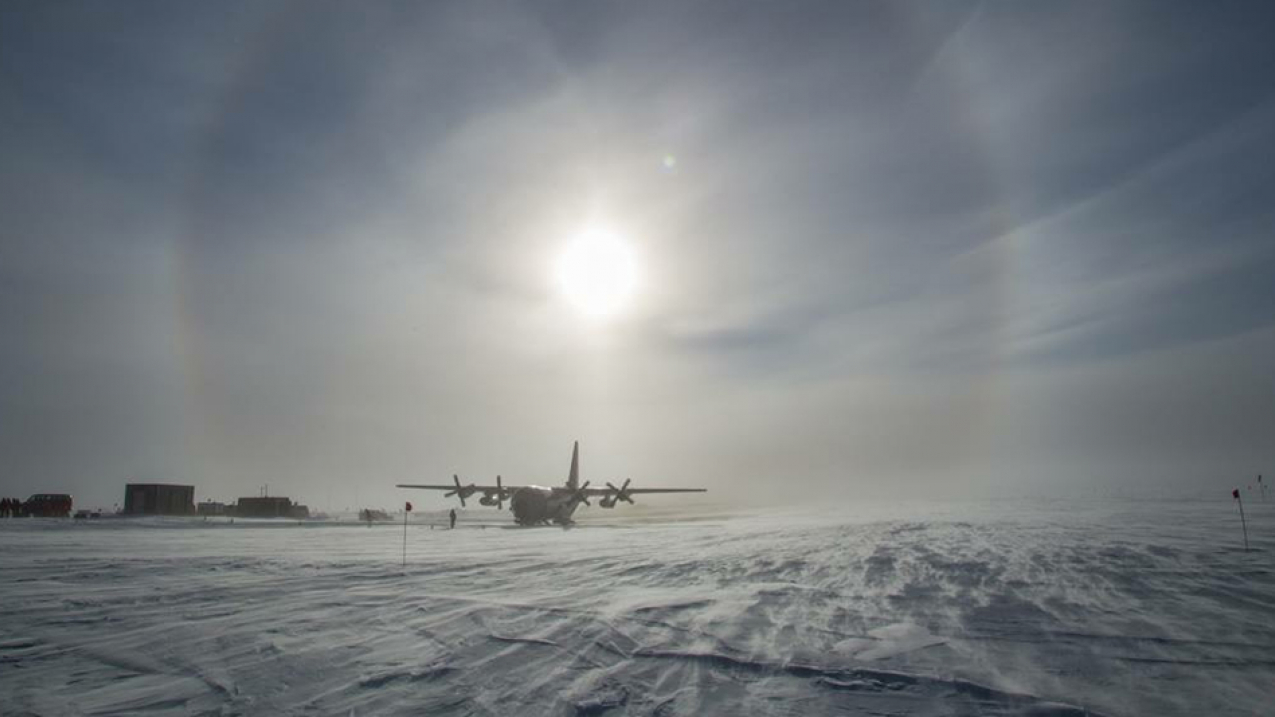
This aircraft at the South Pole Observatory was the final flight out for scientists leaving ahead of winter in Antarctica. February 16, 2018. (Image credit: Courtesy of Robert Schwarz/University of Minnesota)

An official website of the United States government
Here’s how you know
Official websites use .gov
A .gov website belongs to an official government organization in the United States.
Secure .gov websites use HTTPS
A lock () or https:// means you’ve safely connected to the .gov website. Share sensitive information only on official, secure websites.

This aircraft at the South Pole Observatory was the final flight out for scientists leaving ahead of winter in Antarctica. February 16, 2018. (Image credit: Courtesy of Robert Schwarz/University of Minnesota)
As hints of spring appear across the United States, NOAA’s first all-women crew at the South Pole atmospheric observatory are half a world away, ready for Antarctica’s brutal, six-month polar night.
Winter at the South Pole is so cold that many aircraft mechanical systems simply won’t work, so for nine months of the year, the “overwintering” scientists and staff remaining at National Science Foundation’s Amundsen Scott Station are almost completely isolated. The next occupied outpost is nearly 800 miles distant, and it’s so cold that planes can’t fly.
Last week, scientists and staff at the South Pole station boarded a specially equipped Air National Guard C-130 for the last scheduled flight (watch this video from last year) out of the region after days filled with packing and preparation.
For South Pole Station Chief Lt. Cherisa Friedlander, who stayed behind, there was a palpable excitement in the days leading up to that last flight. Facing the challenge of the long Antarctic winter is what she went there for.
"I had many people tell me I might feel emotional or anxious as the last plane flew away,” Friedlander said. “But I stood outside feeling happy and curious for what the next nine months will bring. We have a great group down here; we’ve been well-trained, and whether this is your first winter or you’re back for another, everyone seems to be enthusiastic about the new season."
The duty is not for the faint of heart.
Daily, through the winter, Friedlander and technician Sabrina Shemet walk a quarter-mile from the main station to the lab, often navigating in the dark using a line of flags to guide their way. Then they must climb to the top of a 90-foot tower to clear fans and inlets of frost to make sure sampling equipment can function. Once a week, they monitor levels of Antarctic ozone by launching a weather balloon filled helium and equipped with a special instrument, called an ozonesonde.
Then, they wait for the data to stream in as the balloon soars into the Southern Lights.
> See more images of the South Pole Baseline Atmospheric Observatory.